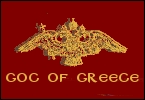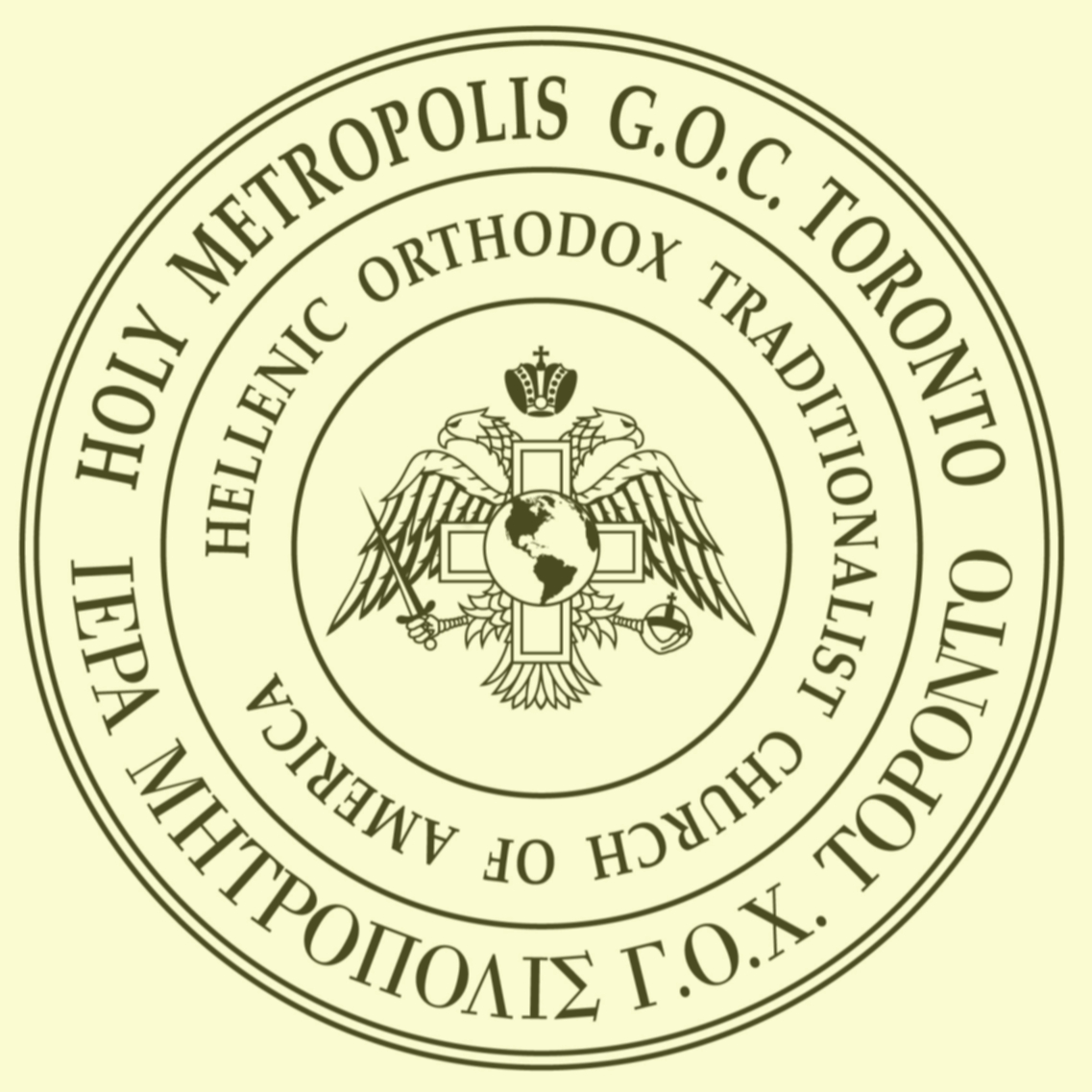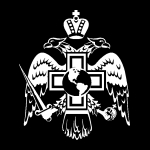A Response to certain Name-Worshippers
- Details
- Created on Tuesday, 28 February 2012 01:16
A short while ago two responses to a certain article which was published in «Φωνή τῆς Ὀρθοδοξίας» in 2005 appeared on a Russian website. This article had recently been translated into English and has gotten the attention of Name-Worshippers in Russia, who are unknown to me and they consider themselves affected by this article. They have reached the point of characterizing themselves as followers of the teaching of St Gregory Palamas (misinterpreting the things written by him) and whosoever opposes the delusion of name-Worshipping, they consider as Barlaamites. They resemble the Monophysites who on the one hand, called themselves followers of the teaching of St. Cyril of Alexandria and on the other hand called the Orthodox, Nestorians. We synoptically answer the main points of the Name-Worshippers in question as follows:
1. Our article is based on Greek sources and not Russian ones. We only know the details of the Russian Synod’s condemnation of Name-Worshipping from indirect literary sources, and I do not endeavor to comment on the documents of the Russian condemnation of this heresy. Personally, I doubt the accuracy of the excerpts brought forward by the two authors. But, I consider the condemnation of the Ecumenical Patriarchate (based on the advice of the Theological School of Halki ) to be more important, because Athonian monks first proclaimed the heresy of Name-Worshipping. In addition, it was an Athonian monk who first censured this heresy, and it was first on Mount Athos that conflicts first broke out until the Name-Worshippers were transferred to Russian territory. Therefore, the Synod of the Ecumenical Patriarchate was responsible to make a decision concerning this issue. We are not going to investigate whether the decision of the Russian Synod was dictated by the Tsar or if the Tsar later changed his mind concerning the treatment of Name-Worshippers. We do not consider this important. Perhaps, the Name-Worshippers were accepted into communion under certain conditions, after declaring their Orthodoxy. However, the medal which Tsar Nicholas awarded to the Elder Kallinikos the Hesychast, who harshly criticized the heresy, is preserved on Mount Athos to this day. It is also an historical fact that the Tsar sent a ship to Mount Athos to remove all the Name-Worshipping monks. Therefore, we have grounds to doubt the accuracy of the Name-Worshipper’s claims concerning the stance of the Martyr-Tsar Nicholas.
2. Certainly, the concept of Divinity refers both to God’s essence and energy. This is not related to the heresy of Name-Worshipping. St. Gregory Palamas did not express Name-Worshipping beliefs. These are novel ideas and arbitrary assertions. St. Gregory Palamas, in his epistle to John Gabras (not John “of Gabras” as those Name-Worshipping writers say, who don’t know what they are reading and are ignorant of Greek) said that we cannot separate the agent from the energy and that the energy is not self-subsistent, but whenever we mention the energy, we include the agent. God is the agent in the Divine energies. But, we do not expect those who cannot even read correctly the title of a particular work to understand its contents.
3. We reverence icons because of the persons depicted, and not because of the inscriptions. The inscriptions are necessary in order to specify the persons depicted. However, the reverence is offered to the persons depicted.
4. If the Name-Worshippers’ claim were true that “the Divine grace and energy is encrypted in the sounds of the Divine name,” then we could perform sacraments by playing back pre-recorded prayers recited by the priest! The sacraments are not performed by the sounds of divine invocations, but by the Persons to Whom the prayers are offered: the Father, Son and Holy Spirit Who have a common energy and essence.
5. We mention in the article in question that the heresy of Name-Worshipping has been revived chiefly among the Slavic Orthodox. This is in no way pejorative towards the Slavic Orthodox (as implied by the authors), but it is a description of the reality that it is chiefly among them that such debates and theological conflicts take place. Greek-speaking Orthodoxy has remained (until now) largely indifferent on the subject. After the heresy’s condemnation by the Ecumenical Patriarchate in 1913, the issue was considered resolved, and, it is now only academicians, scholars and Church historians who are interested in this topic. For this reason very few articles and books about Name-Worshipping are to be found in the Greek language. Therefore, we do not consider it to be an open case.
6. The authors characterize the issue as a “foreign theological issue”. In a way they are right, Name-Worshipping is foreign to Orthodoxy, so let those who are outside the body of the Church rage. The point of our article was historical and informative, written on the occasion of the “ordination” at that time (circa 2005) of a certain Name-Worshipper from Russia by deposed, former clergymen of our Church.
7. The authors, being uninvolved in Greek education and obviously having a distaste for the hesychastic tradition, think that they understand the teaching of St. Gregory Palamas better than the Righteous Elder Kallinikos the Hesychast who harshly criticized the heresy and provoked the synodal condemnation of the Name-Worshippers. Elder Kallinikos the Hesychast lived an eremetic life remaining closed in his cell for 40 years, struggling in strict fasting and prayer. He was deemed worthy to behold the uncreated light, (and those monks in obedience to him often saw his face shine. He reposed on August 6th 1930 as a zealot monk (from the beginning condemning the calendar innovation). We repeat his accurate axiom concerning the Name-Worshippers:
“they left the head and worship the hat”
If the Name-Worshipping apologists smugly think that their voices have more validity than Kallinikos the Hesychast of Blessed memory. We do not believe that they do, rather, we align ourselves with the opinion of this Holy Elder. Finally therefore, let us consider the words of St. Gregory of Nyssa:
“Let us cease desiring to be teachers of teachers. Let us loath the war of words which destroys its hearers. Let us believe as our Fathers bequeathed [to us], for we are not more precise than the teachers.” (PG 46, 1112A)
In Athens January 26, 2012
Bishop Photios of Marathon
**************************************
About Kallinikos the Hesychast (in Greek)
http://www.ekklisiastikos.com/2009/11/blog-post.html
http://evodiasosmin.blogspot.com/2011/11/blog-post_8945.html
Orthodox Awareness
The Problem of Conservative New Calendarism
A talk delivered by Fr. Maximus (Marretta) to the Inter-Orthodox Conference "Orthodoxy and Modern Ecumenism," University of Chicago, March 5/18, 2007. Read more...
Missions
Saint Matthew the Evangelist, Jonesboro, Arkansas
Jonesboro is a town located near the Eastern border of Arkansas, with a population of approximately 60,000. From a human standpoint, it’s not the most likely candidate for a traditional Orthodox mission, but for an Orthodox Christian who orders his priorities around Christ and His Church, it makes perfect sense. Read more...
Youth
2023 Youth Conference
Please join us for the 2023 youth conference in Chicago, IL! To learn more, visit the home page or visit the conference website.
Ask A Priest
Two-Headed Snake Cane?
Q. Can you tell me what the two-headed snake cane the Greek Bishop is walking with represents? What does it mean?
-V.T.
Read more...





